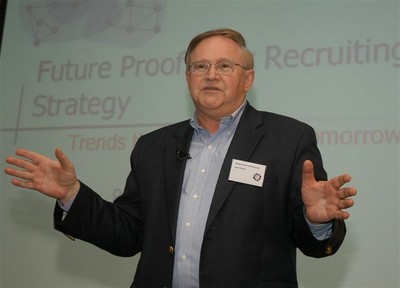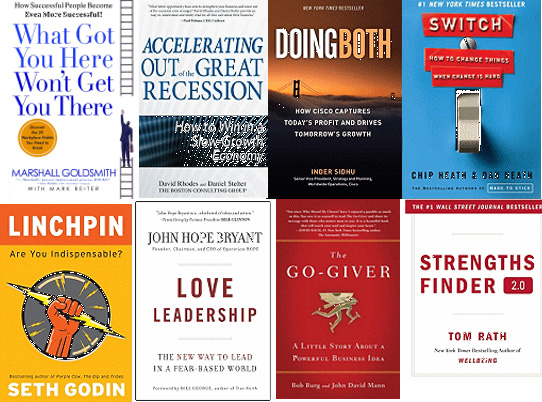I know I mentioned on Monday that I would wrap up this discussion, but I found an outstanding article earlier this week that is worth sharing. The article was written by Kevin Wheeler. Kevin is a recruiting guru who has worked with many of the best companies in the United States. He has become one of the most well-respected voices in the recruiting industry. I’ve read many of Kevin's articles over the past several years and have benefited greatly from his viewpoint. 
Kevin's recent article highlights some predictions for 2011 and is particularly insightful. Since he doesn’t specialize in the real estate industry, I’ll provide some commentary on how Kevin's thoughts apply to what you may be experiencing.
Hiring Situation
“Mid-level hiring will remain slow, and there will be few additions to support administrative staff. Much of this hiring will be outsourced to Recruitment Process Outsourcing companies (RPOs) and agencies that specialize in specific areas. The demand for workers with minimal skills will shrink even further as technology replaces them. Many organizations have already replaced receptionists with automated sign-in systems and automatic call systems. Accounting and bookkeeping systems are using OCR to automatically input receipts and other data into their systems.”
“Mid-level hiring” is the category of positions that we see typically make a transition to the real estate industry. The good news…the supply will be good (lots of people will remain out of work). The bad news…many people in this position can’t afford to start a real estate career, or don’t want to risk giving up their current job (if they still have one).
Recruitment Process Outsourcing (RPO)
“RPO will continue to grow as a service with more sophisticated approaches and more technology. Some firms will focus on specific regions or on functional verticals. These RPOs will invest the time and conduct research that will help them build large communities of candidates with narrow, deep expertise. They will do this cheaper and better than a corporate recruiter can because of dedicated resources and investment in technology. Corporate recruiting functions need to build better ways to assess RPO firms, establish firm performance criteria, and negotiate contracts based on how well your needs are met, rather than on cost.”
In the interest of full disclosure, Tidemark is an RPO firm. These are the issues we focus on every day and companies use our services because it’s cheaper and more effective than sourcing candidates on their own.
Talent Management
“I have long advocated that every organization should increase its focus on developing a holistic and integrated approach to talent. That will begin to happen in earnest this year. Every major survey, including those from Pricewaterhouse Coopers and the Boston Consulting Group, indicate that CEOs are now relentlessly focused on getting better people in their organizations and are willing to put the resources in place to make it happen.
Critical positions need to be clearly identified, and there should be a plan as to how those positions will be filled. The plans should rely on a mixture of internal promotions/transfer as well as external placement. Development should be a key component and lead to a percentage of positions being filled by newly trained internal candidates. Entry-level hiring can feed this pool, as long as development and assessment are in place. Rigorous performance assessment in real time as well as feedback to recruiting on success traits are also important parts of a successful talent management plan.”
As we talk to real estate leaders across the country, we constantly hear about the lack of talent at the first-level manager position (commonly referred to as a branch manager or sales manager). This is, by far, the number one issue that limits growth for most real estate companies. How can this be solved? Understand and apply the “talent management” strategies that companies in other industries have developed. One quick warning…doing this is not quick, easy, or cheap.
Employment Brand
“Building a believable and vigorous brand will consume more time and resources than it did in 2010. A recruiting website will be much less critical, although still important, to success. It will be more important to use a variety of marketing tools, including targeted marketing, Twitter, and Facebook, as well as LinkedIn, to interest more people in learning about your organization and opportunities.”
We’ve spent a bunch of time in WorkPuzzle over the past year talking about positioning your company in the mind of the potential candidate. Just like someone needs to envision your company as the best choice when buying or selling a house, they also need to see your company as one of the most desirable places to work in your local marketplace.
Internal Sourcing Teams
“Internal sourcing teams will morph from a focus on Internet search, which will remain a small part of the process, to a major focus on social media. The purpose of the sourcing team will be to ensure a supply of interested people who can be turned into candidates by a combination of skilled recruiter involvement and sophisticated marketing tools. These teams will be small, technically highly skilled, and capable of being community managers, marketers, and experts in identifying and assessing key candidates virtually.”
In late November and early December, Dave Mashburn wrote a WorkPuzzle series about Lessons from an Expert Recuiter. This series (1,2,3,4) highlights Kevin’s point. There is no substitute for having one of the most talented individuals in your company be the first line of interface to the candidates who are considering making a transition to a real estate career.
Social Media
“In every way, the backbone of the recruiting function will be its ability to use social media — the tools that connect and engage millions of potential candidates. Their success will be in how effective they are in convincing people to take part in the sub-communities that they create for their firms. This will require a strategy that has been carefully thought out and is revisited constantly and updated as its effectiveness is evaluated.
Whether they use Facebook, Hyves, LinkedIn, or another community is immaterial. What matters is that the community they choose attracts the kind of people they need. New smaller specialist communities may arise over the next year, and staying abreast of these, or even creating them, may make the difference between success and failure.”
This is an area that needs growth for many real estate companies and it’s an arena that is a major focus for our company in 2011.
Kevin’s Summary
"In many ways 2011 will look a lot like 2010 but with more focus on implementing the initiatives that were started in 2010 and in being realistic about the use of RPO, outsourcing, and the need to focus on critical positions."
Editor's Note: This article was written by Ben Hess. Ben is the Founding Partner and Managing Director of Tidemark, Inc. and a regular contributor to WorkPuzzle. Comments or questions are welcome. If you're an email subscriber, reply to this WorkPuzzle email. If you read the blog directly from the web, you can click the "comments" link below.
 In addition, I mentioned a study in last week's editions that has spurred some questions from readers. The number one question I've received is, "What is the Hawthorne Study?"
In addition, I mentioned a study in last week's editions that has spurred some questions from readers. The number one question I've received is, "What is the Hawthorne Study?" 










